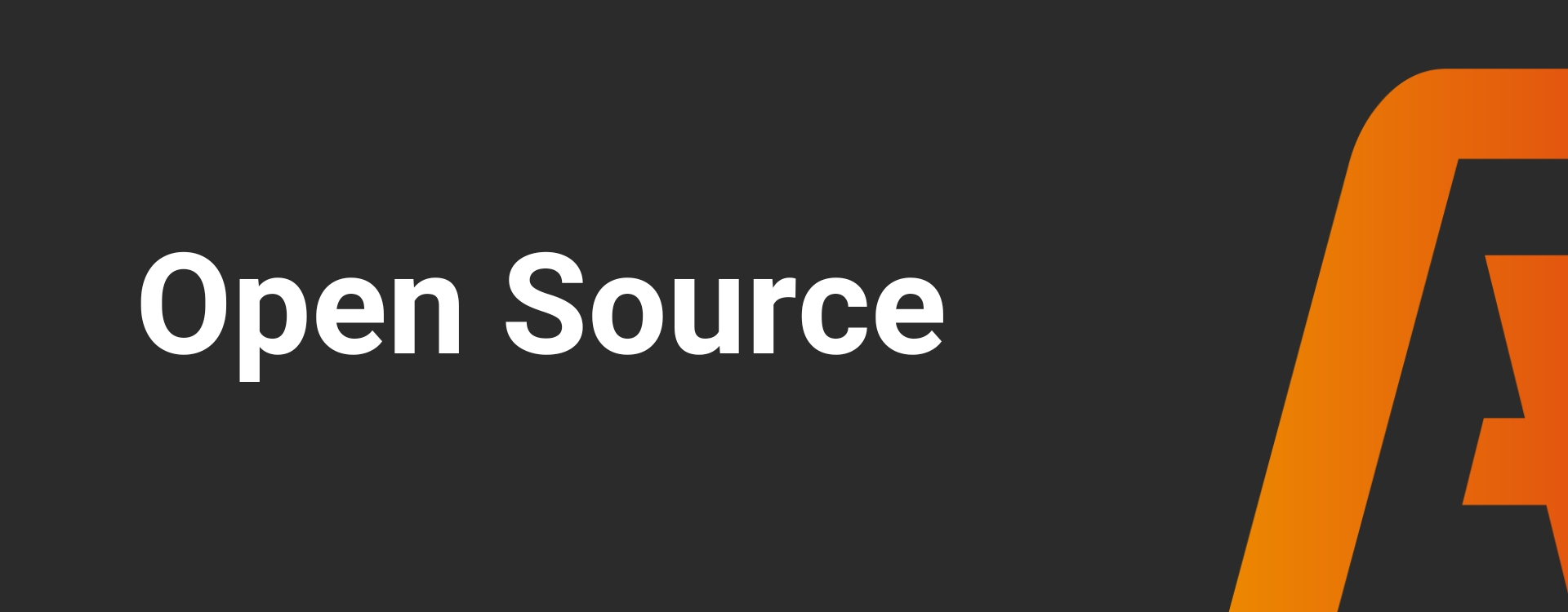» What is open source?
» How does it work?
» Who uses it?
» The benefits of open source
» What is the difference with proprietary source?
» Does open source mean it’s free?
» Why has it become increasingly popular in recent years?
» What is a popular open source language?
» Open source and Ignition SCADA
» Explore Ignition
Other knowledge base articles

Open Source
In this article
» What is open source?
» How does it work?
» Who uses it?
» The benefits of open source
» What is the difference with proprietary source?
» Does open source mean it’s free?
» Why has it become increasingly popular in recent years?
» What is a popular open source language?
» Open source and Ignition SCADA
» Explore Ignition
What is open source?
Open source is a term that refers to software whose source code is freely available for anyone to use, view, modify, or enhance. The source code is a part of the software that most users never see. It is the code that allows programmers to modify how an application operates. Programmers who have access to the source code have the ability to add features or fix components.
The use of open source software has increased significantly in recent years, and many companies and organizations have integrated open source software into their workflows. Open source software is used for a wide range of applications, including web development, enterprise software, operating systems, and much more.
How does it work?
Developers download the source code of the software to then improve or customize it according to their specific needs. Other developers review the changes and further develop them, leading to a collaborative development of the software. This results in higher quality, more security, and more features for the software.
Open source software is typically distributed through online platforms such as GitHub, SourceForge, or GitLab. Developers and users have access to the source code on these platforms and have the option to download it. Some software has a community of developers and users who collaborate on developing and improving the software.
Open source is primarily used for software development. However, it can also be applied to other areas such as hardware development, scientific research, and even at the policy level. The open source model is primarily based on sharing knowledge and building collaboration. This leads to faster and better development of software and projects.
Who uses it?
This software can be used by a wide variety of users, including:
- Individuals: for personal projects, hobbies, and learning programming.
- Businesses: to develop mission-critical applications and systems, as well as to save costs and shorten development time.
- Non-profit organizations and government agencies: to improve their services and reduce costs.
- Academic institutions: for research, education, and to teach students programming and software skills.
The benefits of open source
- More control: Programmers have the ability to examine the code, ensuring it doesn’t perform any unwanted actions. If certain parts of the software are unsatisfactory, they can simply be modified.
- Training opportunities: Because the source code is publicly accessible, students can easily study it while learning to create better software. Students can also share their work with others and request comments and critiques as they develop their skills. When people discover errors in a program’s source code, they can share them with others to prevent them from making the same mistakes.
- Security: The software can be viewed and modified by anyone, making errors that the original program creators may have missed more visible and corrected sooner. Programmers can work on a piece of software simultaneously without needing permission from the original creators, making it faster to repair, update, and upgrade the software.
- Stability: The source code is publicly distributable. Users who rely on the software for critical tasks won’t lose their tools if the original creators discontinue support.
What is the difference with proprietary source?
In contrast to open source, proprietary source is not freely accessible to developers. Only the creator of the source code is able to legally copy, inspect, and modify the software. There is no community available for further development and improvement of the software. As a result, substantial investments are required for innovation. This makes the use of proprietary software less flexible, and the user is highly dependent on the vendor. In a time where developments and innovation are rapidly evolving, this does not fit. You want to be able to rely on solutions that accelerate your growth.
Does open source mean it’s free?
No, this is a common misconception about what open source entails. It can be free, but this is certainly not the standard. Open source refers to the license under which the software is distributed, allowing users to view, modify, and distribute the source code. The license often includes the freedom to use the software for any purpose, but does not imply that there are no costs associated with it.
The availability of the source code is just one of the ten points that open source must meet. The other points describe, among other things, that the software can be passed on to others, that the original creator receives recognition, and that there is the possibility of creating derivative products.
It is important to note that while open software may have lower initial costs than proprietary software, there may be other costs associated with its use. Additionally, some companies offer paid versions of open source software with additional features or services.
Why has it become increasingly popular in recent years?
- Cost savings: The use of the software is often free and/or has an attractive licensing model. This is especially appealing for smaller companies with limited budgets.
- Flexibility: It offers more flexibility because the source code is available for modifications. This enables companies to tailor the software to their needs and integrate it better into their systems.
- Community: The open source community consists of developers collaborating to enhance the software. This results in better software with more features.
Independence: Companies are not dependent on a single vendor for support and updates. The community provides support, and there are many companies offering services for this software. - Innovation: It enables companies to quickly adopt and integrate new ideas and technologies into their systems. This gives them a competitive advantage and helps them adapt to changing market conditions.
Security and reliability: It is used and reviewed by a large number of people. This makes security issues and bugs easy to identify and resolve.
What is a popular open source language?
A popular open source programming language is Python. Python is a general-purpose language widely used for various applications, including web development, scientific computing, task automation, and data analysis. It is appreciated for its readability and simplicity of syntax, as well as its extensive library of modules and extensions. Python is a popular choice for both beginner and experienced programmers and is often recommended as a good first programming language.
Open source and Ignition SCADA
Ignition is a Java-based SCADA platform developed by Inductive Automation. It is used for managing production processes, control systems, visualizations, and reporting. Although Ignition is a commercial product, it still offers several advantages over other SCADA systems, especially when it comes to open source:
- Open architecture: Ignition is designed with an open architecture that makes it easy to customize and extend the system using various programming languages and libraries. This allows for the development of custom modules and plugins to meet specific requirements.
- Web-based: Ignition is a web-based SCADA platform. This means it is accessible from any modern web browser without the need for special user software. This makes it easier to install, configure, and maintain the system.
- Powerful module functionality: Ignition offers a wide range of modules, including modules for reporting, MES functionality, mobile access, and more. These modules extend the functionality of Ignition and allow users to develop custom solutions for specific industries and applications.
- Active community: Ignition has an active community of developers and users who develop and share new modules, plugins, and functionality. This creates a vibrant ecosystem around the platform.
No licensing fees per tag: Ignition does not charge licensing fees per tag. This makes it a very cost-effective SCADA system for large applications with a large number of tags.
Discover Ignition
your way
Start building
For developers
Get started with your own Ignition applications right away.
- Download and install Ignition easily and quickly.
- Explore all features.
- Connect unlimited tags, PLCs, databases, and devices.
Discover how Ignition solves your technical challenges without limitations.
See Ignition in action
For managers
Explore Ignition without any technical knowledge in the demo environment.
- No installation required.
- See how Ignition automates and visualizes processes.
- Adjust live values and see instant results.
Experience real-time automation and discover what it can offer your business.
Want to really know what Ignition can do for you?
Let us come to you for a free demo.
- Meet with our experts and ask all your questions.
- Get personalized advice.
- See how Ignition can optimize your processes.
The perfect opportunity to collaborate with specialists and see exactly how Ignition can help you achieve your business goals.
Start building your own application now!

Discover how Ignition can improve your processes!
Want to see how Ignition automates and visualizes processes without any technical knowledge? Fill out the form and gain immediate access to the demo environment, where you can experience Ignition live.

Schedule a no-obligation demo with our experts!
Want to learn more about how Ignition can optimize your processes? Request a personalized demo and discuss your business goals with our specialists. Fill out the form to book an appointment.

